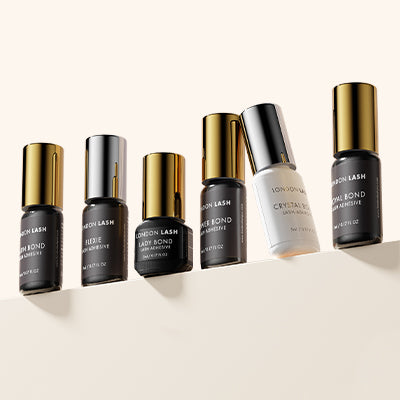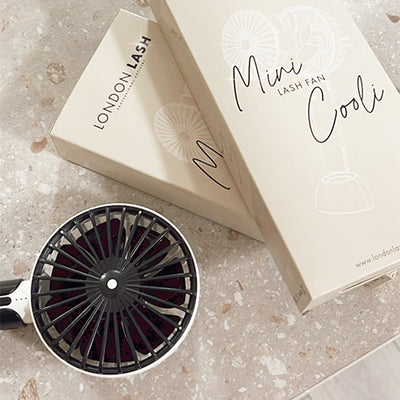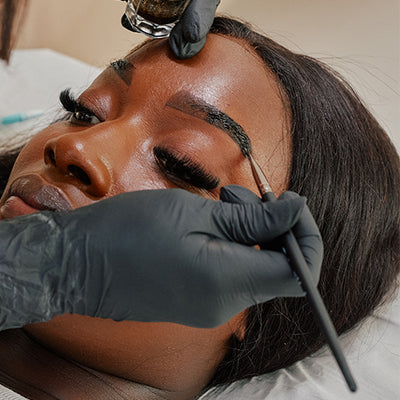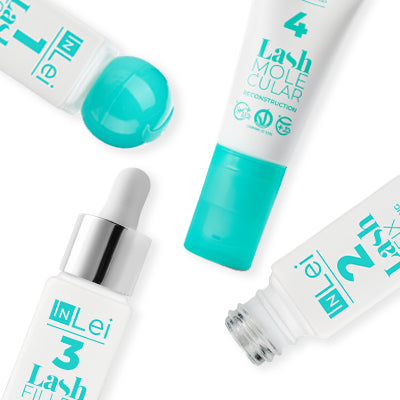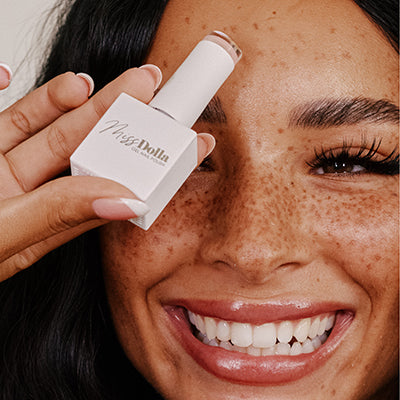What Causes Shock Polymerisation of Lash Glue?
As a Lash Tech, you're probably already familiar with the term "shock polymerisation." But what exactly is it, and how does it affect the eyelash extension glues we use? It might sound a bit like science fiction, but don't worry – we're here to break it down for you. So let’s get into what shock polymerisation of eyelash extension glue is all about, why it happens, the hiccups it can cause, and how you can keep it from giving you a Lash-Tech headache.
What Is Shock Polymerisation of Eyelash Glue?
Shock polymerisation of eyelash extension glue is the lightning-fast process where your eyelash glue goes from the malleable liquid you need it to be whilst you’re perfecting your lash extension placement, to solid in the blink of an eye and locking those lash extensions in place before you’re ready!

What Causes Shock Polymerisation Of Eyelash Glue?
The culprit is temperature change and moisture. When your eyelash extension glue encounters a sudden change in temperature or is exposed to moisture, this encourages the molecules in the eyelash glue to link up and solidify, triggering shock polymerisation. Transforming your lash glue from its natural liquid state into a solid lash glue bond almost instantly.
The Science Behind Shock Polymerisation of Eyelash Glue
Alright, let's put on our science goggles for a second and take a look at what's happening at a molecular level during shock polymerisation. Shock Polymerisation is a rapid chemical reaction that takes place when the cyanoacrylate molecules in the eyelash extension glue cure too quickly and harden almost instantly as a result of a sudden temperature change or exposure to moisture - like a lash glue opened in a humid beauty room or stored incorrectly! Instead of staying clear or black in colour, the eyelash glue will take on a white appearance. Shock polymerised lash glue is also really brittle, which isn't great for your eyelash extension retention, as the lash glue bonds will break easier and cause premature lash shedding for your poor clients!

What Are The Problems Caused by Shock Polymerisation of Eyelash Glue?
Here are some common issues you might encounter that are caused by shock polymerisation of eyelash extension glue:
-
Rushing Against the Clock
When shock polymerization hits unexpectedly, you might find yourself racing against the clock and you won't have much time to finesse the placement of your eyelash extensions. Rushing can lead to uneven or crooked lashes – not the look your clients are hoping for and leaving your client with a wonky lash line that's more Picasso than perfect!
-
Unwanted Lash Bonds
Ever had those moments when your eyelash tweezers slip, and boom! Two individual lashes are stuck together? Shock polymerisation can be sneaky and cause unwanted stickies if you're not quick enough.
-
Oops, A Sticky Situation
If your lash glue hardens too quickly, you might accidentally get some on your lash tweezers, hands, or even the natural lashes! This can be a sticky mess to clean up and might affect the final result.
-
Limited Lash Space
With shock polymerisation, you need to work in smaller sections when applying the lash extensions to ensure you have time to place and adjust them before the lash glue solidifies. This can end up being very time-consuming and slow down your overall process.

How Can You Prevent Shock Polymerisation of Eyelash Glue?
Now that we know the ins and outs, how can you prevent shock polymerisation from wreaking havoc on your lash game? Here are some of our top tips and tricks to prevent it from getting the best of us:
-
Control Your Salon Temperature: Keep your beauty room at a consistent temperature with a Digital Hygrometer and Thermometer that helps you keep an eye on your lash room’s temperature and humidity levels so you can avoid sudden fluctuations in your salon’s conditions that will trigger the shock polymerisation of your lash glue.
-
Choose the Right Eyelash Glue: To be a successful Lash Tech with amazing lash extension retention, it’s important to make sure that you are using the correct lash glue with a drying speed that matches the pace of your lash application and will still work at its best within the conditions of your beauty room.
-
Work Smart, Not Fast: Divide and conquer! When you are drawing your lash mapping to guide your lash extension placement, divide the lash line into smaller sections, allowing you to work efficiently without battling against the clock.
-
Master Your Lash Technique: ‘Practice makes perfect’ is a mindset that every Lash Tech should try to have. As you gain experience with every lash extension treatment you perform, you'll become more comfortable with the rapid curing time of the lash glues you use and will develop a lashing rhythm that works best for you.
How Can You Fix Shock Polymerisation of Eyelash Glue?
Unfortunately, if shock polymerisation of your lash glue has already occurred, there isn’t a quick fix solution. You’ll have to remove all of the lash extensions with lash glue bonds that have been polymerised and re-apply them. First of all, you’ll need to tape back the lashes that you don’t want to be removed. Then, using an eyelash extension remover, add a small amount onto a microfiber eyelash brush, dab it onto the white eyelash glue residue and let it work its magic. Once the lash glue bonds have been dissolved and you have removed the lashes, you’ll then need to re-do your pretreatment on the natural lashes to remove the leftover lash glue residue and prep them again for new lash extensions to be applied. Only when the natural lashes are dry can you get back to it with your eyelash glue and re-apply those lashes.

We know shock polymerisation might sound like a sci-fi term, but it's all about mastering the art of timing and preparation. By understanding what it is, why it happens, and how to navigate its quirks, you're armed with the knowledge to create stunning lash looks that withstand the test of time. Embrace the challenge, experiment, and remember that every Lash Tech has been through this learning curve. You've got this – go out there and give your clients the lashes they've been dreaming of!




